JJ Harper – 20 July, 2020
Now, decolonizing your mind is all well and good, but at a certain point it becomes an identitarian dogwhistle disconnected from the necessary materialist analysis that decolonial theory requires. It also feels like a relatively dubious part of the group's mandate when the discourse around the Black and Latinx heritage of voguing is simply non-existent in this presentation of Tyrell's work. Inclusion of that context in a ‘white' gallery would be an intellectual act of decolonization. After all, politics are always more compelling as an aesthetic.
Wellington
Pati Solomona Tyrell and Christian Thompson
Oracles
Curated by Robert Leonard
4 April - 6 September 2020
Oracles at City Gallery is an exhibition of work from Pati Solomona Tyrell and Christian Thompson, spanning photography, performance, film and the digital landscape.
Tyrell is a founding member of Auckland-based queer Pasifika collective FAFSWAG and the youngest nominee for the Walters Prize. He is most known for his lens-based works that explore queer indigeneity from a neo-colonial Pacific framework. Tyrell’s work is deeply cinematic and often incorporates elaborate costuming.
Thompson is an interdisciplinary Bidjara Aboriginal artist, holding a doctorate in Fine Arts from Oxford; his work focuses on indigeneity and queerness through performance and like Tyrell Thompson often utilises dramatic costuming.
The combination of the two artists makes sense, but you could argue that the overwhelming similarities between their practices leaves little room for an engaging dialogue between the two artists’ works. Walking into City Gallery still feels like a novelty in the age of coronavirus, as Elisabeth Pointon’s banner ironically exclaims to the incoming gallery goers—it does still feel like a BIG DEAL.
The standout (say even spectacular) work in Oracles is Berceuse, a three channel video installation by Thompson re-conceptualising the now considered extinct Bidjara language via song. The Bidjara are the indigenous peoples of what is now mid-western ‘Queensland’ in so-called ‘Australia’. Berceuse is French for lullaby, a fitting title for an aesthetically calming work. Berceuse positions Bidjara as not yet colonised to extinction under the notion that if one word of Bidjara can be spoken, it can still be considered ‘living’.
Thompson’s face is projected and overlaid in the installation, creating abstract silhouettes reflective of the ‘Australian’ outback. The haunting mise-en-scene, alongside the work’s soothing sonic and visual elements, is juxtaposed to clue the audience in on the dramatic narrative of love and betrayal in the lyrics. The video is beautifully entrancing; it has an Abramovic sharpness to it. The cinematic dialectics reminded me of Shannon Te Ao’s oeuvre, the use of multi-channel and monochromatic video challenging the prevailing settler-colonial conception of time.
‘Lullabies’ are commonly used across cultures as ways to pass down knowledge. In Te Ao Māori whakaoriori have been customarily used to educate tamariki on their whakapapa. The references to whakataukī and use of waiata in hs work serve similar purposes to Thompson’s use of ‘lullaby’ here. Alex Davidson in Artforum wrote that
Te Ao has described the idea of “time travel in one’s own body” as a way to access the belief systems and traditions to which the indigenous body is historically yoked… His work burrows deep into genealogical space-time and resurfaces with a kind of polymorphous empathy, a tenderness across generations and ancestries.
The overwhelming majority of the audience engages with Berceuse as colonisers, confronted with the pain and beauty in the expression of the colonised. Thompson’s sensorial autoethnography (a self-ascribed term) melodically draws the audience in to acknowledge indigenous conceptions of time and love, via language (in the oral tradition customary for many indigenous languages) in the contemporary neo-colonial polemic of the gallery. Berceuse is politically charged and triumphantly indigenous in its taking of narrative space within the ‘white cube’.
The use of French in the title references France as a significant colonial force, and much of Thompson’s work deals with the different factions of European colonialists. Each entry in the photographic series Enchantments is subtitled as a letter to a Victorian-era German coloniser of ‘Australia’. Thompson, in the tradition of Cindy Sherman, takes up the mantle of a Dickensian spirit haunting these men—a clear (yet spooky) statement on the continuing impacts of colonisation in all our lives. Chillingly more so when you consider how indigenous peoples were (and in many areas still are) transported as product, akin to animals and plants —the latter represented in Thompson’s photographs through Florist-esque arrangements. (On that note, I’d be remiss to not mention all the German colonisers Thompson names invested in Victorian ideas of botany, wherein the floral display looming over the background becomes an analogy for violence.)
What looms over Tyrell’s work, and much of FAFSWAG’s collective output, is its undeniable use of the Black and Latinx American culture, specifically voguing. This feels in contradiction with Thompson’s indigenous reclamation and even FAFSWAG’s own politics.
In the wall text by Chief Curator Robert Leonard (and corresponding paraphernalia) it seems taken for granted, in its absence, that the history of voguing is common knowledge. For those uninitiated, voguing is a style of dance that evolved out of the queer underground competitive ballroom scene in 1980s Harlem, documented in Paris is Burning and popularised by Madonna’s song, Vogue. Voguing takes stylistic inspiration from Egyptian hieroglyphs and the modelling in its namesake, the magazine Vogue. As such the style is made up of rapid fire procession of striking a pose(s), emulating a photo shoot—all very angular and chic. As a zoomer I don’t really know who Madonna is, but regardless of that, I question whether the City Gallery audience comes to Oracles with much knowledge of what voguing is anyway.
Obviously FAFSWAG and the Auckland voguing scene are not one and the same, but they are inextricably linked. For instance, FAFSWAG: The Interactive Documentary, structured à la Street Fighter, pitted two voguers against one another, with the viewer able to choose the winner, followed by the option to watch a short documentary portrait about their choice. With voguing such a central frame of Tyrell’s work, for City Gallery to then have avoided engaging curatorially with those critical histories seems like not only a missed opportunity, but a disservice to the audience. I point this critique at both parties, seeing that a notable part of FAFSWAG’s branding is their claim to decolonize not only the brown and queer bodies that make up the collective—and their wider community—but their minds too.
Now, decolonising your mind is all well and good, but at a certain point it becomes an identitarian dogwhistle disconnected from the necessary materialist analysis that decolonial theory requires. It also feels like a relatively dubious part of the group’s mandate when the discourse around the Black and Latinx heritage of voguing is simply non-existent in this presentation of Tyrell’s work. Inclusion of that context in a ‘white’ gallery would be an intellectual act of decolonization. After all, politics are always more compelling as an aesthetic.
Oracles as a title, also gives me pause. In Fāgogo, (the work which nabbed Tyrell a nomination for the Walters Prize) Tyrell elevates his community to that of ‘oracle’ or more plainly, Godly status, via cinematic portraiture, while also acting as a documentation of the Auckland vogue scene.
Fāgogo offers compelling dissection of the role the Church has played in the colonisation of Polynesia and how that religious ideology has endangered and discriminated against queer people. The use of Christianity as a colonial tool helped facilitate many crimes, especially when it comes to the erasure of indigenous conceptions of gender. Fa’afafine, fakaleiti, fafine, akavaine, mahu and takataapui are often all lumped together as ‘examples’ of a ‘third gender’ in pre-colonial indigenous societies, a label applied often in the press coverage of FAFSWAG.
I find this description reductive, as it isn’t really the case. It not only erases the distinctions between Polynesian cultures but denies how truly expansive ‘gender’ is. Across societies gender historically hasn’t been binary, there aren’t just two categories, let alone this centrist neoliberal co-opting of ‘decolonization’ that decrees there can now be a ‘progressive’ three categories.
Gender is radical in how it can hold space for everything, an idea on full display here in Oracles. Unfortunately, in Oracles I can also see uninterrogated gestures towards problematic concepts like that of Pania of the Reef, those mystical ideas of indigeneity that have been weaponized against Polynesian peoples throughout time. There’s a thin line between reclamation and playing straight into the hands of settler-colonial society; especially when presented in a Pākehā dominated institution like City Gallery, that has historically made questionable curatorial decisions in regards to indigenous concerns and been publicly critiqued for that many times over.
Tyrell’s work is undeniably beautiful and stunning, engaging with multiple conversations at a time, but it’s a shame that some critical exposition has been missed here. In many ways the exhibition was stronger without in-situ access to the interactive documentary, courtesy Miss Covid-19. The documentary complicates the discussion Oracles attempts to have by focusing on voguing without the added context that Fāgogo, which has a broader scope than just voguing, can exist without. Suffice to say the display of Tyrell’s work is lacking extra-curatorial purview. Ultimately Oracles exposes the dissimilarities in the edges around Tyrell’s art when put in conversation with Thompson’s more realised body of work.
James Harper
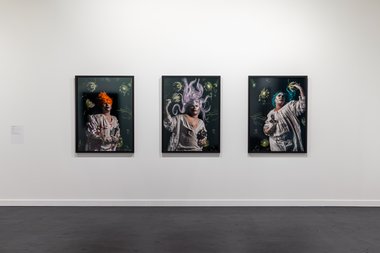

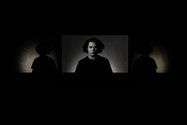
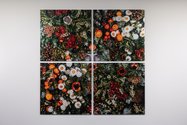
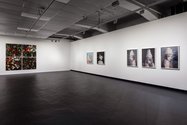
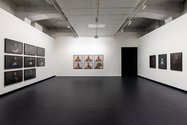
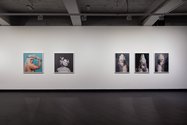
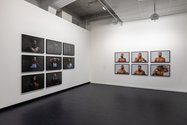
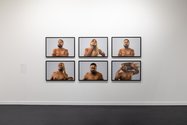
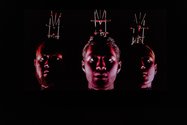
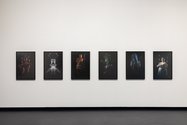
 Two Rooms presents a program of residencies and projects
Two Rooms presents a program of residencies and projects Advertising in this column
Advertising in this column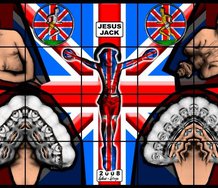
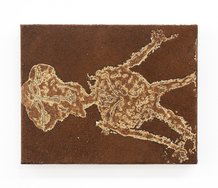
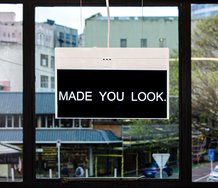

This Discussion has 0 comments.
Comment
Participate
Register to Participate.
Sign in
Sign in to an existing account.